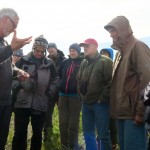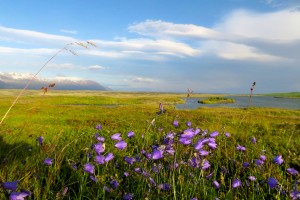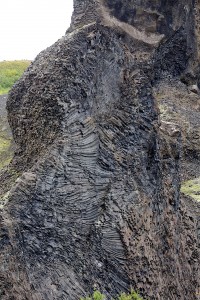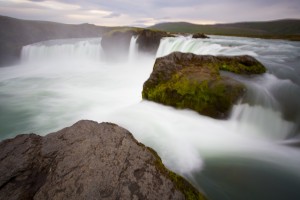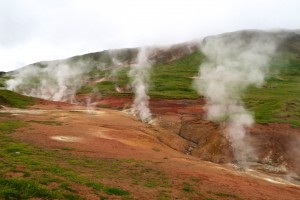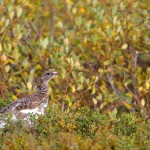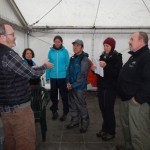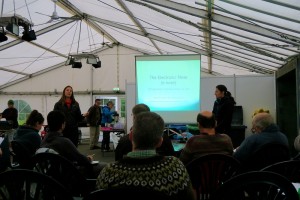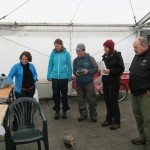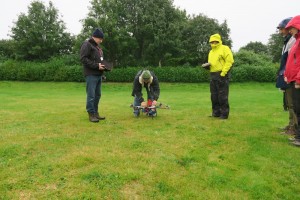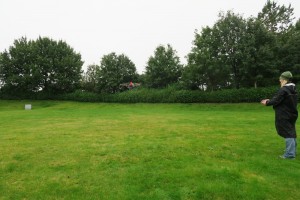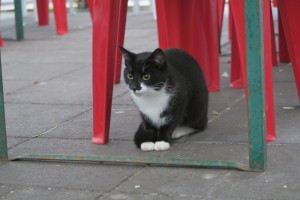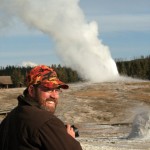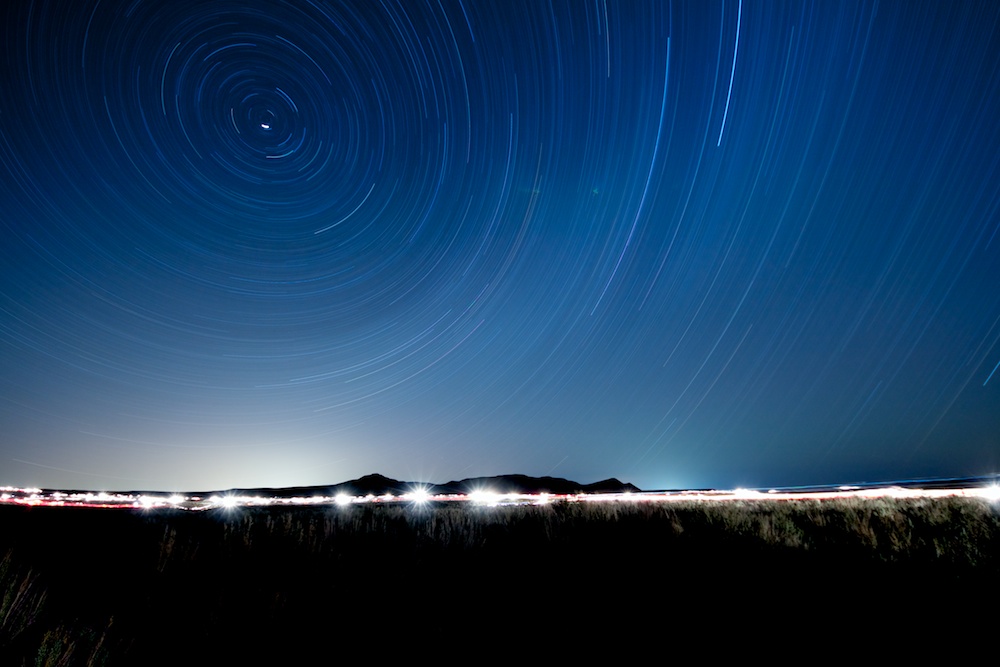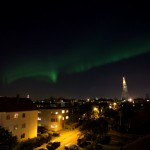
Aurora Borealis seen from apartment
After the workshop was complete, it was time for the main event- the 13 International Grouse Symposium! This conference brings together grouse specialists from all over the globe once ever three years. It’s an interesting interval, for example the Behavioral Ecology meetings are held every other year, while the International Ornithological Congress is every 4th. I suppose three years is a compromise between keeping momentum and maintaining contacts versus making sure there are new stories to tell. IGS had around 150 attendees, mostly from Europe and North America although a few from Asia as well. The next one is planned for Utah in 2018.
The topics on display at the IGS were pretty wide ranging. My talk was pretty far on the basic science/non-applied side (it was on reproductive skew on the leks), but people definitely seemed interested. As we learned from Ilse Storch, head of the red list committee for grouse at IUCN, almost every grouse species is in trouble, and things haven’t gotten better in the past decade. That means most of the talks were management and conservation oriented. There were a lot of really sophisticated spatial analyses dealing with how birds are dealing with changing landscapes. On the other end of the spectrum, there were some presentations on husbandry in some of the most threatened grouse populations. Greater Sage-grouse were probably the most talked about species, and I think more than half of the conference focused on one of the prairie grouse species. Some of the Europeans were heard lamenting “Wow- you guys sure do have a lot of money for research!”.
With such a small meeting spread over three days, there was only one talk at a time. This is in contrast to some of the bigger meetings where you are always missing something because invariably multiple interesting talks are lined up against each other, or the concurrent sessions occur far enough apart it’s not easy to jump between rooms. It was nice to be able to catch everything, and to get to hear some really interesting presentations that I might not normally have gone to.
For what it’s worth, a discussion with Tomas Willebrand convinced me to pick up my twitter and I did a little bit of live-tweeting of some of the talks. I’m a relatively new Twitter convert, so this was the first meeting I had a chance to do that. It was pretty fun to think of short summaries of the presentations, although I don’t think I was as rigorous as some biotweeps who seem to come up with multiple entries for each and every talk.
The venue was at the Hilton near downtown Reykjavik. One highlight of the conference was an elegant banquet on an island just north of the city, in what was supposedly one of the oldest wooden structures on Iceland.
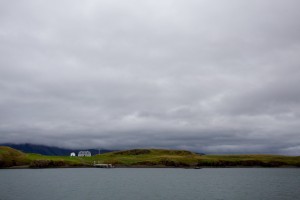
Taking the ferrry to the conference banquet
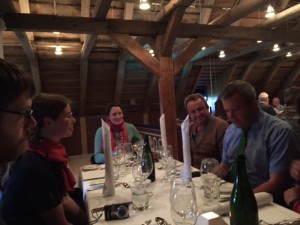
Anna, Peter, and Alicia getting entertained by some Dutch researchers
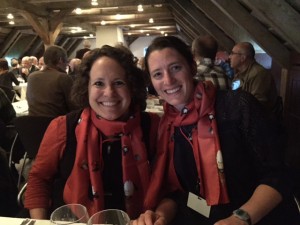
Gail and Marcella showing off their new grouse scarves.
Another highlight was getting to chat with Jacob Höglund, one of the authors of THE book on leks. Very cool to geek out about the differences between Black Grouse and Sage-grouse with one of the giants of behavioral ecology and someone who’s been studying grouse behavior (among other things) for many years.

